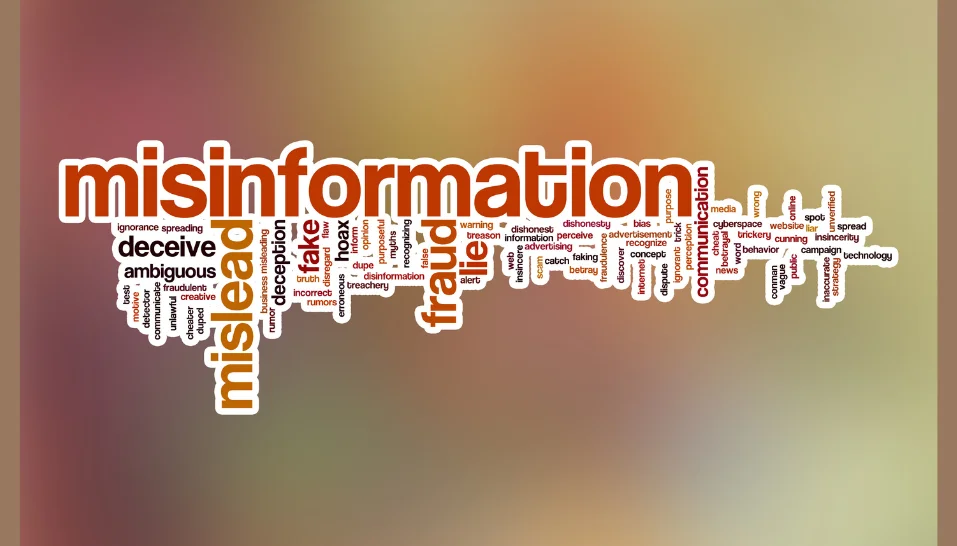Understanding how the internet and social media have changed out engagement with health (mis)information, and whether we, as individuals, can successfully evaluate veracity, is a vital task.
Our world is becoming increasingly digitalized. The COVID-19 crisis, lockdowns and social distancing has seen technology and digital connections emerging as the “new normal”. The internet is a popular resource to learn about health and to investigate one’s own health condition. Loads of statistics and raw data are now easily accessible, just a click away!
It has almost become a routine for physicians to be confronted by patients and their families based on their ‘Google knowledge’ and ‘medical understanding’ from the internet. Medicines are altered, treatment stopped, alternate treatment sought and often appointments missed, due to the information (or let’s say misinformation) available on the web. It’s good to stay informed about your health and diseases, but with every bit of information, the risk of misinformation, hearsays, rumors, fake news and misinterpreted data increases.
Health misinformation is now considered to be one of the leading public health challenges. Easy cures and hearsay health solutions become more trustworthy during crisis situations (like the COVID-19 pandemic), and there is an increased public tendency to believe in and follow health-related misinformation. Historically, this has done more harm than good.
Let’s look at a few common examples. That eating apricot seeds will cure cancer is a misconception commonly found online. This lacks scientific evidence. In fact, it is well researched that consuming apricot seeds may even cause cyanide poisoning.
Similarly, between 1921 and 1974, Listerine advertised that their mouthwash could cure colds and sore throats, resulting in corrective advertising order from the Federal Trade Commission. This misinformation has stood the test of time. We all remember how throughout 2020, the claim that warm saline gargling and betadine mouthwash could cure and prevent COVID-19 was rampant on social media!
Another landmark example of how health misinformation can be a public health hazard is linked to vaccine hesitancy. The quintessential example of misinformation in public health is the misconception that the measles, mumps, rubella (MMR) vaccine causes autism, a concept popularised by a study published in the Lancet in 1998. This “causative effect” was immediately and strongly refuted by the scientific community, which eventually led to the retraction of this publication and the lead author was legally barred from practicing medicine.
However, the public perception got adversely affected for years with a predictable negative societal impact. The United States faced multiple declarations of public health emergencies due to measles outbreak in 2019. Misinformation associated with vaccines has been traditionally ‘popular’ and even today amidst a pandemic crisis, we have seen people in multiple nations refuse the COVID-19 vaccine in spite of its proven efficacy.
Understanding how the internet and social media have changed out engagement with health (mis)information, and whether we, as individuals, can successfully evaluate veracity, is a vital task. Health-related misinformation has particularly severe consequences with regards to risk of mortality, quality of life and social parameters.
Sadly, public health crises such as epidemics and pandemics can amplify misinformation through social media and rumors. The underlying psychological drivers are emotions (fear, anxiety, survival instinct, etc), panic behaviour, cognitive and confirmation biases, need for an easy cure, and a sense of security. Unhealthy consumption of data related to ‘deaths, cures and cases’ during COVID-19 has only heightened the mental health adversities (depression, anxiety, sleep disturbances, etc.) during the pandemic.
So, what can be done about this? There needs to be collective responsibility to tackle this at all levels, from individuals to policy makers alike. The first step needs to be a collaborative partnership between physicians, public health researchers and journalists which can improve health reporting and debunking misinformation.
Here are a few simple, yet effective ways to deal with the issue:
- Improving e-health literacy
- Using social media platforms more responsibly
- Digital distancing (like social distancing) during pandemics
- Using authentic sources (like WHO, CDC, ICMR, etc.) for health data
- Enhancing public health surveillance
- Targeting vulnerable populations (children, adolescents, elderly, people living with mental illness and other disabilities)
- Creation and distribution of accurate information
- Systematic debunking of false information (reaching out to the community)
- Research into the psychological basis for the spread of misinformation
- Responsible involvement of the media, public figures and policy makers
These priorities can inform policy and practice aimed at addressing health misinformation on social media, such as content moderation standards used by platforms and rumour mitigation efforts undertaken by public health agencies. The COVID-19 infodemic has taught us how risky health misinformation can get. Where we go from here will depend on how seriously we take these public health lessons!
(The author is a consultant geriatric psychiatrist based in Kolkata, India and a member of First Check.)


















Add Comment